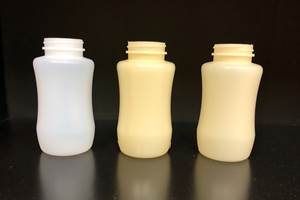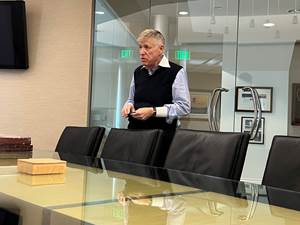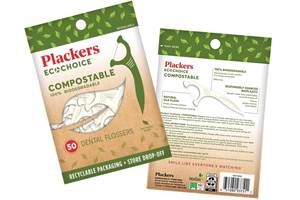Victrex Develops PAEK for Additive Manufacturing; Leads Consortium for Advancing AM Technologies
New generation materials rival earlier versions for both laser sintering and fusion filament fabrication processes.
Pioneer of PEEK Victrex (U.S. office in West Conshohocken, Penn.), has been developing materials for different additive manufacturing (AM) processes. The company leads a consortium of companies and institutions and was awarded funding from the U.K.’s agency for innovation, Innovate UK, in 2016 to carry out intensive pioneering R&D to advance AM technologies. The other members include Airbus Group Innovations, EOS, University of Exeter Center for Additive Layer Manufacturing, E3D-Online, HiETA Technologies, South West Metal Finishing, and 3T-RPD.
One key focus, in particular, is high-temperature, affordable polymer composites for AM aerospace applications. Victrex will present detailed technical results of its developmental PAEK materials at the bi-annual Additive Manufacturing conference of the University of Exeter Center for Additive Layer Manufacturing (CALM), in September 2018.
The first of these is a high-strength material in fine powder form for laser sintering (LS) which is said to attain lower refresh rates, resulting in improved recycling for unsintered powder. The second is a filament with a better strength than existing polyaryletherketone (PAEK) materials and better printability for fused filament fabrication processes (FFS/FDM).
Said Victrex CEO Jakob Sigurdsson, “These next-generation Victrex PAEK materials mark a decisive step forward, having potential to transform multiple applications, including aerospace and medical. The exciting progress is based on continued intense R&D at Victrex and excellent collaboration within the Victrex led consortium of companies and institutions pursuing innovation in additive manufacturing. Through this consortium we’re already seeing demonstrator parts that show how AM processes, coupled with high-performance materials, transform thinking to create truly innovative parts based on increased design possibilities.”
The PAEK incumbent materials on the market, although used in some AM applications, were designed for conventional manufacturing methods, such as machining and injection molding. As such, they have some features that are not optimal for AM processes. A first generation PAEK material for LS can only be recycled in a very low extent and required nearly full refresh of the printing bed with new powder, and PEEK filaments available for FFS have poor interlayer bonding, leading to a loss in Z-strength.
In contrast, the new developmental polymer grades have shown encouragingly low refresh rates (improves recycle for unsintered powder) with similar mechanical properties in LS, and in FFS good mechanical properties and printability. Said John Grasmeder, chief scientist at Victrex. The powder recycle work for laser sintering, using the new Victrex developmental polymer grades has gone very well, with no measurable loss of properties when test components were made from partially recycled powder. We believe it will be possible to reuse all of the non-sintered powder that is recovered after a build run. This will result in a significant reduction in material cost compared to current PAEK materials where up to 40% of the polymer is wasted and cannot be recycled.”
Meanwhile, the new Victrex PAEK filament and powder tie in with technologies developed by other members of this Innovate UK project. EOS has recently released a new automation-ready manufacturing platform for the LS process of plastics parts on an industrial scale (EOS P 500) with the capability to print high-performance polymers at high temperatures. Selected materials of the consortium are evaluated with the EOS P 500 platforms.
Victrex is planning to continue pre-commercial testing of a new PAEK filament product in conjunction with consortium partner E3D, who has recently commercially released a new water-cooled filament extruder head especially optimized for this new PAEK filament.
Related Content
How to Extrusion Blow Mold PHA/PLA Blends
You need to pay attention to the inherent characteristics of biopolymers PHA/PLA materials when setting process parameters to realize better and more consistent outcomes.
Read MoreUS Merchants Makes its Mark in Injection Molding
In less than a decade in injection molding, US Merchants has acquired hundreds of machines spread across facilities in California, Texas, Virginia and Arizona, with even more growth coming.
Read MoreHow to Optimize Injection Molding of PHA and PHA/PLA Blends
Here are processing guidelines aimed at both getting the PHA resin into the process without degrading it, and reducing residence time at melt temperatures.
Read MoreBMW Group Vehicle to Adopt 3D Printed Center Console
A vehicle coming to market in 2027 will include a center console carrier manufactured through polymer robot-based large-format additive manufacturing (LFAM).
Read MoreRead Next
Making the Circular Economy a Reality
Driven by brand owner demands and new worldwide legislation, the entire supply chain is working toward the shift to circularity, with some evidence the circular economy has already begun.
Read MoreBeyond Prototypes: 8 Ways the Plastics Industry Is Using 3D Printing
Plastics processors are finding applications for 3D printing around the plant and across the supply chain. Here are 8 examples to look for at NPE2024.
Read MoreSee Recyclers Close the Loop on Trade Show Production Scrap at NPE2024
A collaboration between show organizer PLASTICS, recycler CPR and size reduction experts WEIMA and Conair recovered and recycled all production scrap at NPE2024.
Read More














